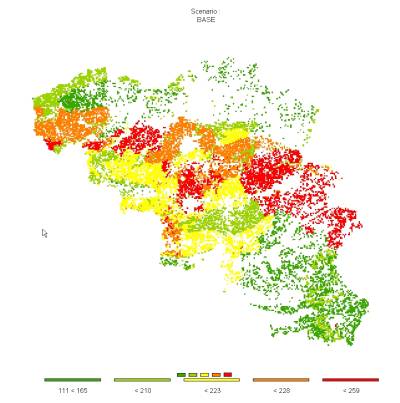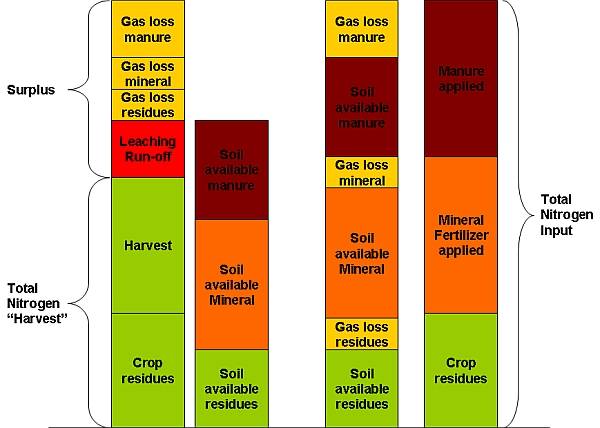Selected environmental indicators at 1x1 km grid resolution- Fertilizer Application Rates
Main Contributors: Wolfgang Britz, Adrian Leip, Markus Kempen
 The fertilizer application rates are estimated from the yields and the stocking densities, and chosen to be in average of the HSMUs in a NUTS II region identical per crop to the estimates found in the CAPRI data base. The basic in CAPRI approach buidts on the combination of a soil surface and farm gate balance for nitrogen, and a soil surface balances for phosphate and potassium. The application rates are also part of the intermediate input costs used to determine economic indicators.
The fertilizer application rates are estimated from the yields and the stocking densities, and chosen to be in average of the HSMUs in a NUTS II region identical per crop to the estimates found in the CAPRI data base. The basic in CAPRI approach buidts on the combination of a soil surface and farm gate balance for nitrogen, and a soil surface balances for phosphate and potassium. The application rates are also part of the intermediate input costs used to determine economic indicators.
The regional crop specific rates in the CAPRI data base are estimated with a Highest Posterior Density estimator, which ensures that crop nutrient need is covered, and that all mineral fertilizer reported in statistics, as well as nutrients stemming from manure, biological fixation, atmospheric deposition and crop residues are fully distributed. In order to estimate the crop specific application rates at regional level, the following data sources are taken into account:
- Crop specific application rates of mineral fertiliser, reported as national average by the International Fertilizer Association
- Typical manure shares for group of crops or single crops, based on expert judgment
- Fertilizer recommondation from DEFRA, taken climate and soil parameters into account
The manure application rates per crop take into account the available organic nitrogen in the HSMUs around the current estimation point, and crop yields, corrected for biological fixation. Application rates are hence increasing with animal stocking densities, and if the crop need to be covered is higher. The available organic nitrogen is estimated from emissions factors found in the CAPRI data base which are derived from a farm gate balance approach in nitrogen.
A further element is the share of the crop nutrient need covered by crop residues, and in case of nitrogen, stemming from atmospheric deposition.
The mineral application rates per crop are determined as to fill up the crop need not covered by manure or crop residues, taking into account the efficieny in fertilization as derived from the CAPRI data base.
More information
- Leip, A., Marchi, G., Koeble, R., Kempen, Britz W. and Li, C.:
Linking an economic model for European agriculture with a mechanistic model to estimate nitrogen losses from cropland soil in Europe
Biogeosciences, 5(1): 73-94 Last Updated:Wednesday, November 05, 2008
